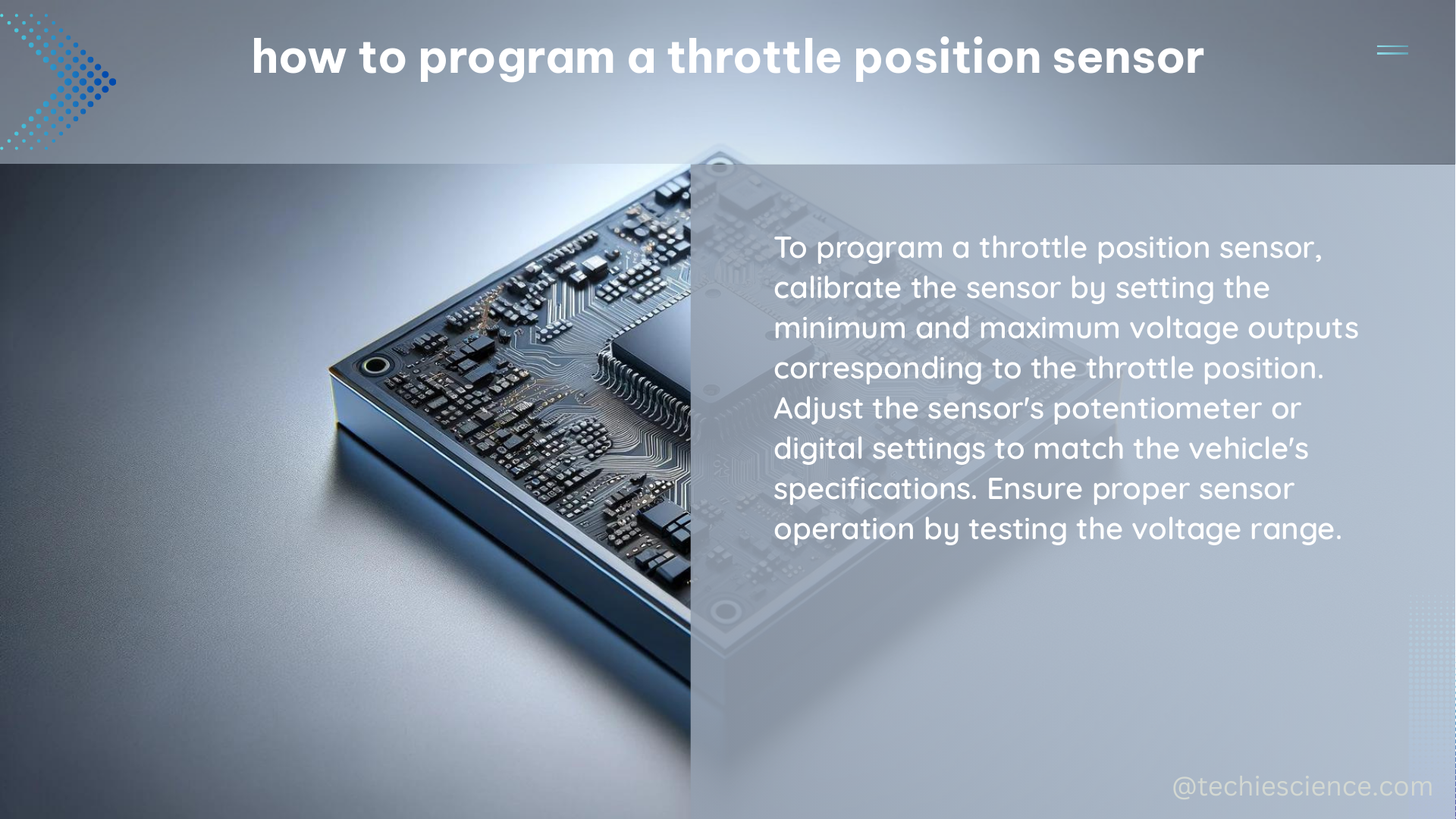Summary
The throttle position sensor (TPS) is a critical component in the engine management system, providing the engine control unit (ECU) with real-time information about the throttle plate’s position. Proper calibration of the TPS is essential for ensuring accurate engine performance, fuel efficiency, and emissions control. This comprehensive guide will walk you through the step-by-step process of programming a throttle position sensor, including detailed instructions, measurable data points, and expert-level insights to help you achieve optimal results.
Preparation and Identification

Before you begin the programming process, ensure that the engine is turned off, and the ignition is in the accessory or run position. Locate the throttle position sensor on the throttle body and identify the three terminals: power, ground, and signal.
Measuring TPS Voltage at Idle
Using a high-quality digital multimeter, measure the voltage between the signal terminal and ground with the engine idling. A properly calibrated TPS should read between 0.5 volts and 0.9 volts at idle, depending on the make and model of your vehicle. This voltage range is crucial for the ECU to accurately interpret the throttle position.
Adjusting the TPS at Idle
If the voltage reading at idle is not within the specified range, you will need to adjust the TPS. Loosen the screws holding the TPS to the throttle body, and slowly rotate the sensor clockwise to increase the voltage or counterclockwise to decrease the voltage. Continue adjusting the TPS until the voltage reading falls within the 0.5V to 0.9V range.
Measuring TPS Voltage at Wide-Open Throttle (WOT)
With the engine running and the throttle plate fully open, measure the voltage between the signal terminal and ground. The voltage should be close to the maximum voltage for your specific vehicle, typically around 4.5 volts to 5 volts. This voltage reading represents the fully open throttle position.
Adjusting the TPS at Wide-Open Throttle
If the voltage reading at wide-open throttle is not within the expected range, loosen the TPS screws and adjust the sensor as needed. Rotate the TPS clockwise to increase the voltage or counterclockwise to decrease the voltage. Tighten the screws once the desired voltage is achieved.
Rechecking TPS Voltage at Idle
After adjusting the TPS at wide-open throttle, recheck the voltage at idle to ensure it remains within the specified 0.5V to 0.9V range. If necessary, make further adjustments to maintain the proper idle voltage.
Testing the TPS
Start the engine and let it idle. Gently press the accelerator pedal and observe the voltage reading on the multimeter. The voltage should increase smoothly and proportionally to the throttle position, indicating that the TPS is functioning correctly.
Confirming Proper Operation
Take the vehicle for a test drive and ensure that the engine operates as expected. If any issues persist, recheck the TPS calibration and make further adjustments as necessary.
Additional Considerations
- Refer to the manufacturer’s specifications for your specific vehicle to ensure you are using the correct voltage ranges and adjustment procedures.
- Use a high-quality digital multimeter with an accuracy of at least 0.1 volts to ensure precise voltage measurements.
- Keep the throttle body and TPS clean to maintain accurate sensor readings.
- If the TPS is not functioning correctly after calibration, it may need to be replaced.
Reference
- How to Calibrate Throttle Position Sensor Using a Multimeter (Set & Test) – Boosted John
- How to Calibrate a Throttle Position Sensor with a multi-tester – Club Lexus Forums
- How to Calibrate Throttle Position Sensor (TPS) – Toyota 4Runner Forums

The lambdageeks.com Core SME Team is a group of experienced subject matter experts from diverse scientific and technical fields including Physics, Chemistry, Technology,Electronics & Electrical Engineering, Automotive, Mechanical Engineering. Our team collaborates to create high-quality, well-researched articles on a wide range of science and technology topics for the lambdageeks.com website.
All Our Senior SME are having more than 7 Years of experience in the respective fields . They are either Working Industry Professionals or assocaited With different Universities. Refer Our Authors Page to get to know About our Core SMEs.